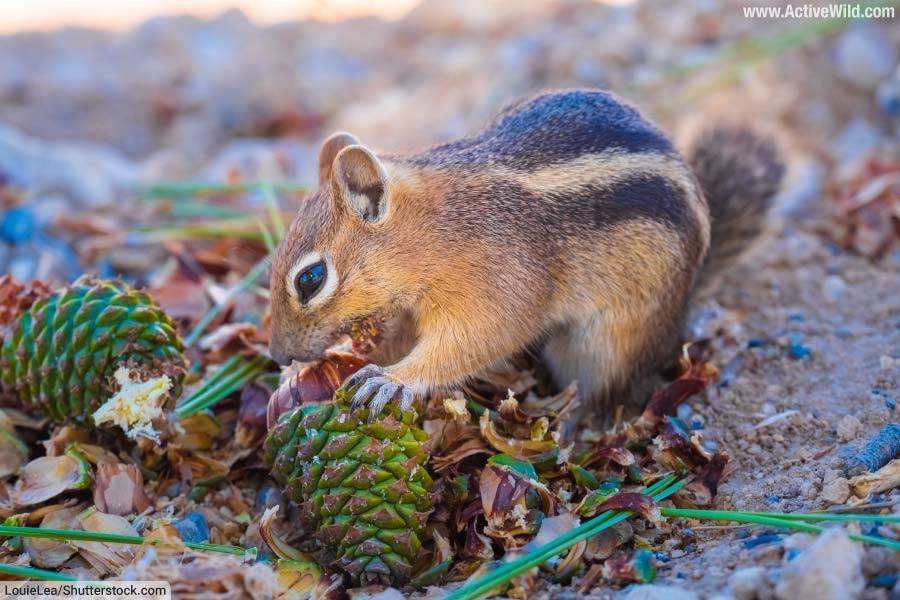
Different types of animals eat different types of food: carnivores eat meat, herbivores eat plants, and omnivores eat both plants and meat. Examples of animals with more specialized diets include fructivores (fruit eaters); and folivores (leaf eaters).
On this page you’ll find facts on carnivores, omnivores and herbivores, plus many examples of more specialized animal diets.
Page Index
- Avivore
- Corallivore
- Sanguivore
- Insectivore
- Myrmecophagy
- Molluscivore
- Ophiophagy
- Piscivore
- Spongivore
- Vermivore
Nutrients
All organisms, be they animal, plant, fungus, or even single-celled lifeforms such as bacteria, need the nutrients contained in food in order to live.
Nutrients provide an organism with both energy and material from which new cells can be made. They include vital substances such as proteins, minerals, carbohydrates and vitamins.
Without food, an animal wouldn’t have the energy required to breathe and move, or the material required to grow, repair itself or reproduce.
Autotrophs Vs Heterotrophs

Organisms such as plants are autotrophic, which means that they produce their own food.
Plants do this via photosynthesis – a process in which energy from the sun is turned into food.
You can find out more about photosynthesis on this page: Photosynthesis Facts
Animals are heterotrophs. Heterotrophic organisms are unable to produce their own food, therefore must consume organic matter (either living organisms or the remains of living organisms) to get the nutrients needed for life.
Even herbivorous (plant-eating) animals such as rabbits are heterotrophs, as they consume plants, which are organic.
An animal is described as being either a carnivore, herbivore or omnivore depending on the type of food it consumes.
- Carnivore = meat eater
- Herbivore = plant eater
- Omnivore = eats meat and plants
All animals – even carnivores – are reliant on autotrophs such as plants or algae; although carnivores don’t eat plants themselves, their prey does!
You can find out more about the relationship between plants and different types of animals on this page: What Is An Ecosystem?
Below, we look at these three main types of animals, then take a look at more specialized eaters, including folivores (leaf-eaters), frugivores (fruit-eaters) and animals that practice coprophagy (you don’t want to know!).
What Do Animals Eat – Carnivores
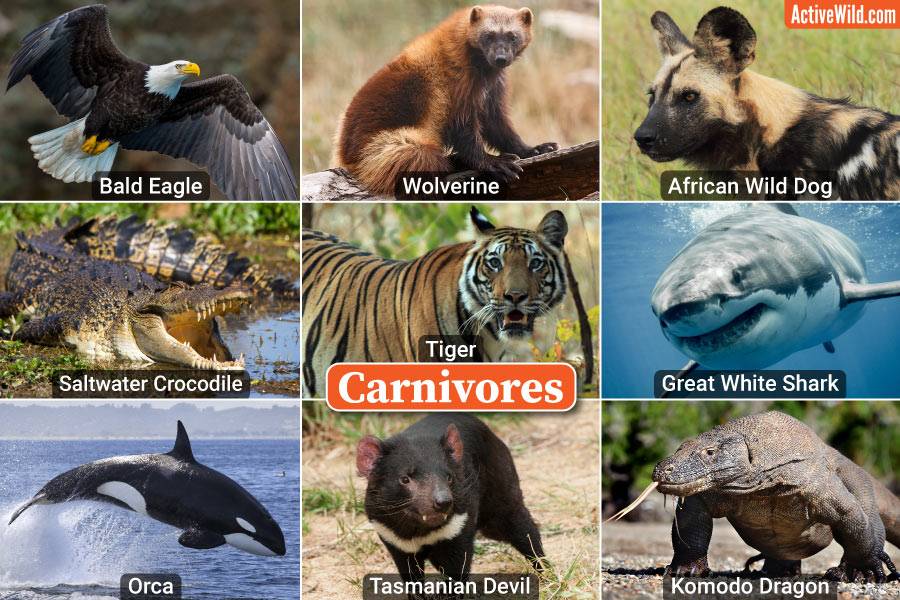
A carnivore is an animal that eats other animals. Carnivores are also known as meat-eaters. Examples of carnivorous animals include lions, eagles, lizards and snakes. (You can see more on this page: Examples of Carnivores)
Predators are carnivores that hunt prey; scavengers are carnivores that eat carrion (the remains of animals).
An apex predator is a predator that has no predators of its own. Examples of apex predators include the tiger and the killer whale / orca. You can see more examples of apex predators on this page: Apex Predators

The ancestors of all amphibians, reptiles, mammals and birds were carnivores. All of these animal groups belong to group of vertebrates known as tetrapods. The first tetrapods were amphibious, piscivorous (fish-eating) animals.
Both the earliest reptiles, and the earliest mammals, are thought to have been insectivores (insect-eaters). Paleontologists use various clues, such as the shape of a fossilized animal’s teeth, to tell what food it ate when it was alive.
Carnivores can be given names depending on the amount of meat they consume. Hypercarnivores have a diet consisting of over 70% meat; the diet of mesocarnivores consists of 30–70% meat, and hypocarnivores eat less than 30% meat. (Mesocarnivores and hypocarnivores may also be called omnivores.)
Obligate carnivores are animals (such as cats) that require nutrients only found in animal flesh, and are unable to break down plant matter.
Predatory carnivores have adaptations such as strength, speed, forward-facing eyes, large canine teeth, powerful talons and sharp claws.
Adaptations of scavengers include an acute sense of smell for locating food, tough teeth or claws for tearing food apart, and a strong digestive system for breaking up bones and / or rotting meat. (Examples of scavengers include vultures and striped and brown hyenas.)
You can see examples of carnivores on this page: Examples of Carnivores
What Do Animals Eat – Herbivores
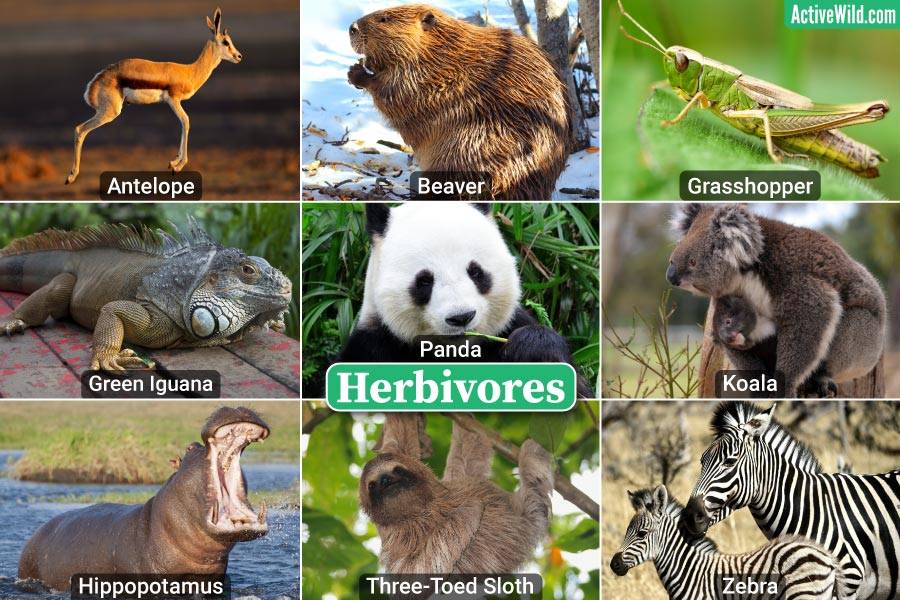
Herbivores, or plant-eaters, are animals whose diet consists entirely or primarily of plants. Examples of herbivorous animals include the water buffalo, elk, giraffe, elephant, camels and horses. (You can see more examples of herbivores on this page: Examples of Herbivores.)
Plant material is often tough and fibrous, containing relatively little energy. Therefore, herbivores require specialized adaptations in order to obtain the required nutrients from plants.
Rodents have incisors (front teeth) that continuously grow (and therefore never wear down); cattle and many other hooved animals have multi-chambered stomachs and regurgitate their food as cud for further chewing in order to get adequate nutrition from their tough, low-energy food. (Animals that chew cud are known as ruminants.)
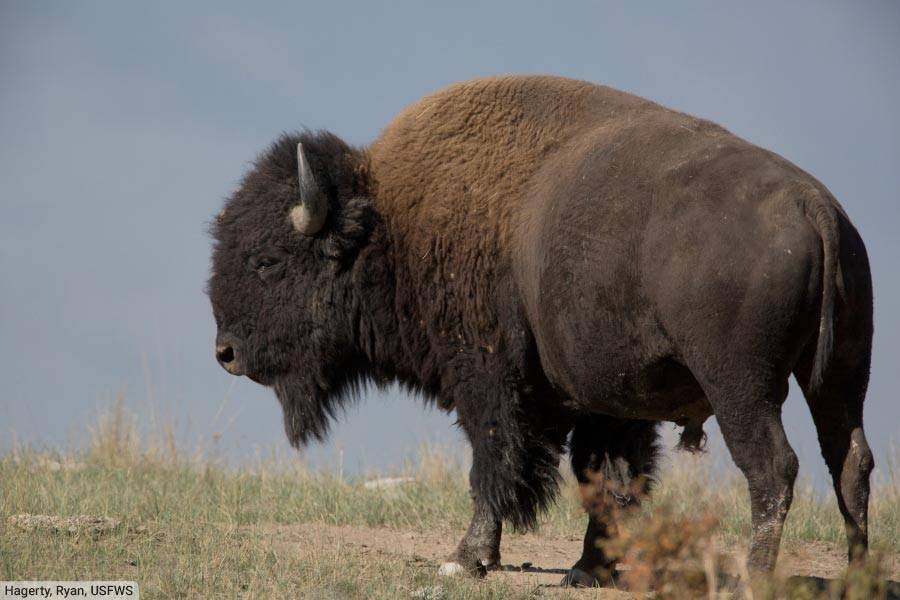
Herbivores that are prey animals have characteristics such as acute senses for detecting predators, and speed and agility for escaping from predators.
You can see examples of herbivores on this page: Examples of Herbivores
What Do Animals Eat – Omnivores
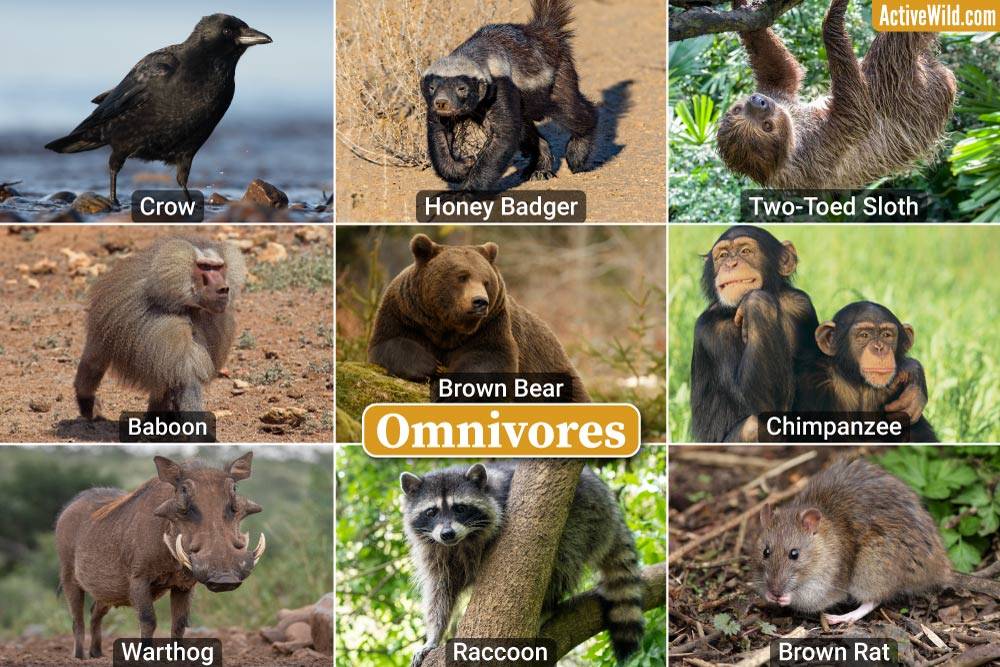
Omnivores are animals whose diet consists of both animal and plant material. Examples of omnivorous animals include raccoons, grizzly bears, many monkeys and apes (including human beings!) You can see more examples on this page: Examples of Omnivores
Omnivores include both animals whose ancestors were carnivores, and animals whose ancestors were herbivores.
Omnivores are usually less specialized than either herbivores or carnivores. For example, omnivorous mammals such as most bears lack the multi-chambered stomachs of hooved mammals. Omnivorous birds, such as crows, lack the talons of birds of prey.

You can see examples of omnivores on this page: Examples of Omnivores
Specialist Animal Diets
Specialist Carnivores
Avivore
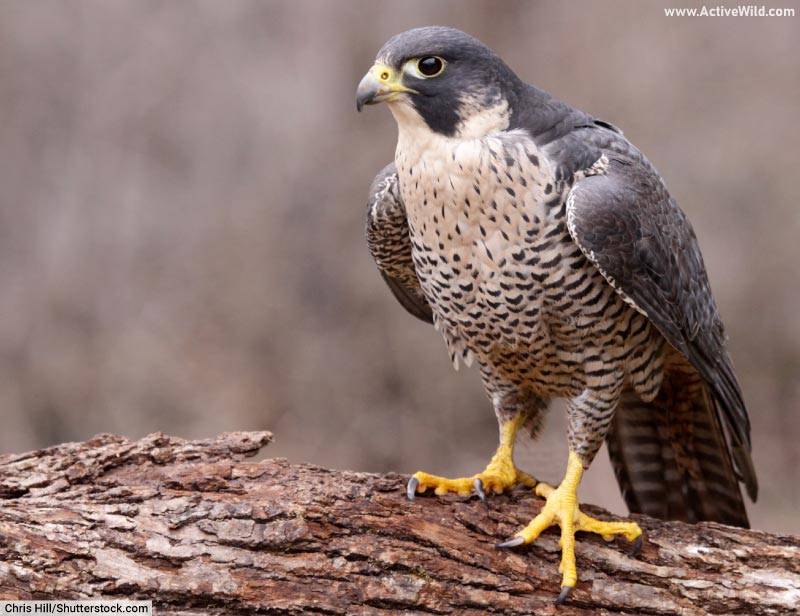
An avivore is a carnivore that specializes in eating birds. Examples of avivores include several birds of prey, including the sparrowhawk – a mid-sized hawk named for its bird-eating behavior, and the peregrine falcon – the world’s fastest animal.
Corallivore
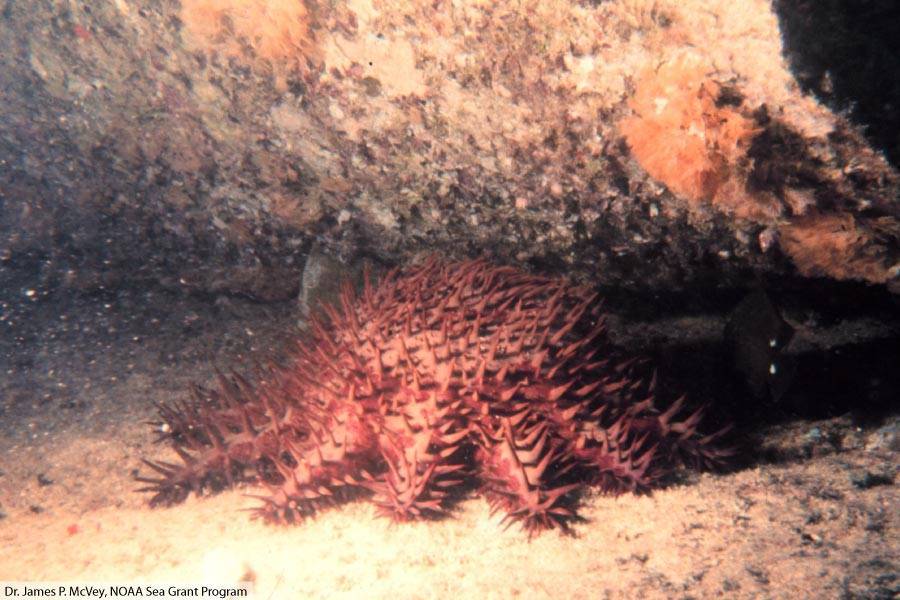
A corallivore is an animal that eats coral. Corals are mollusks whose remains accumulate to form coral reefs. Examples of corallivores include species from several animal groups, including the crown-of-thorns sea starfish, and several species of butterflyfish and parrotfish.
Sanguivore
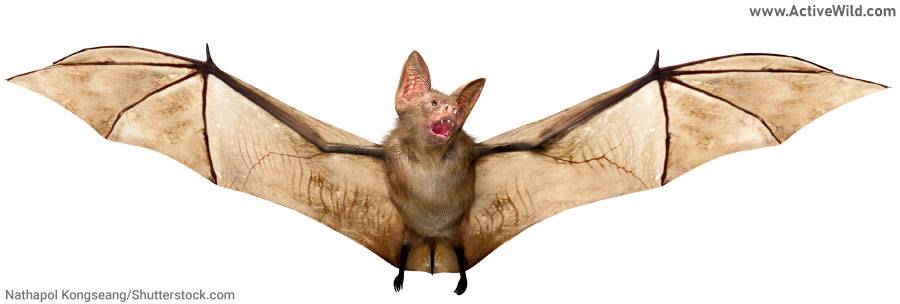
A sanguivore is an animal that feeds on blood. The best-known examples of sanguivores are the three species of vampire bat. The behavior of feeding on blood is known as hematophagy.
Insectivore
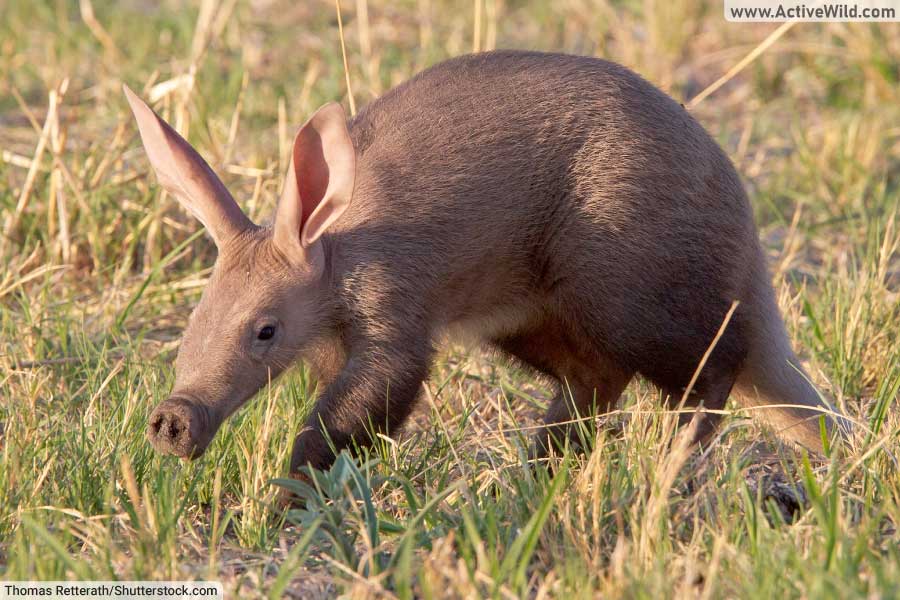
An insectivore is an animal that preys on insects. Examples of insectivores include birds such as flycatchers and bee-eaters, amphibians such as tree frogs, and mammals such as the aardvark.
Myrmecophagy
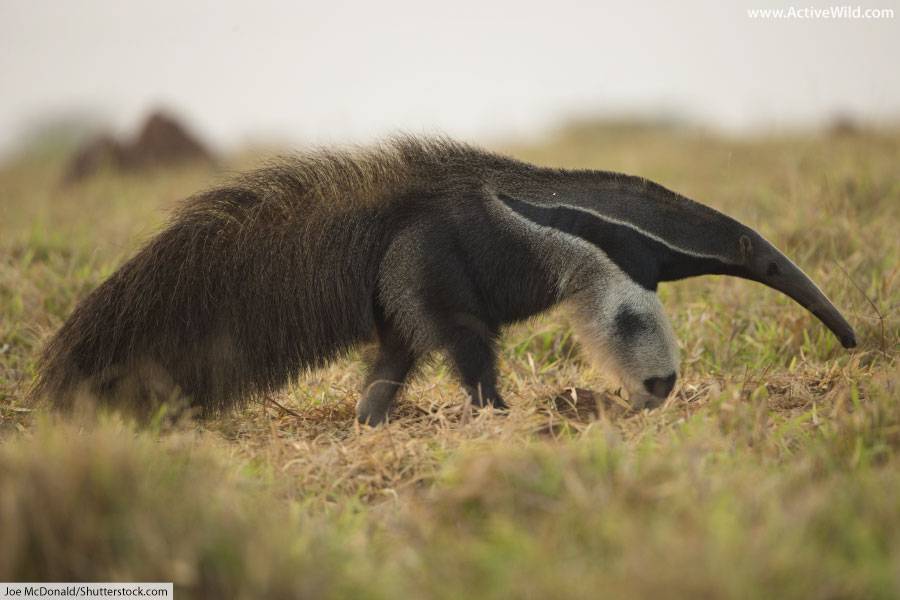
A myrmecophage is type of insectivore that eats ants and termites. Examples of myrmecophages include the aardwolf, aardvark, the four species or anteater, the short-beaked echidna and pangolins.
Molluscivore
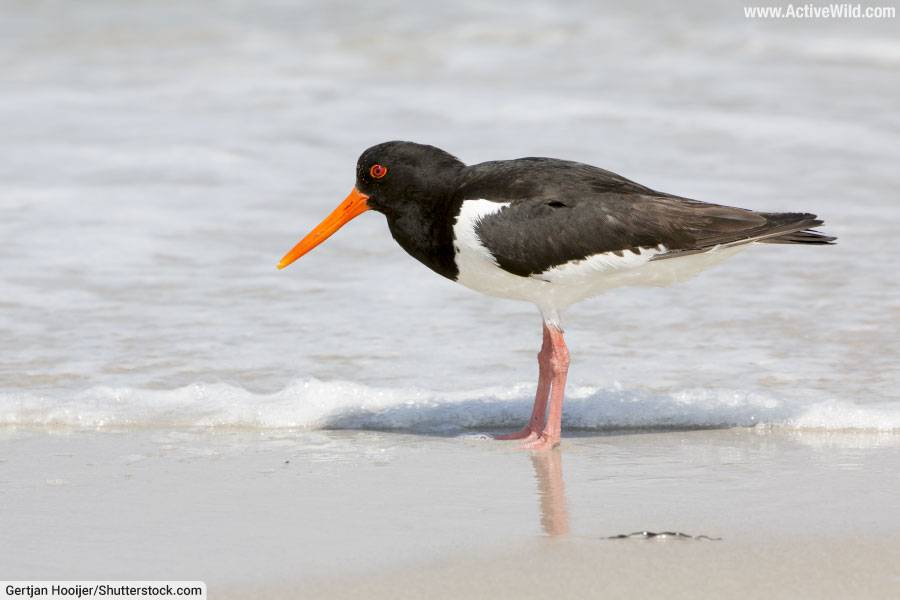
A molluscivore is an animal that eats mollusks. Examples of molluscivores include the walrus, which eats clams and other bivalves, the oystercatcher, a bird whose name reflects its dietary habits, and the rosy wolf snail (Euglandina rosea), a predatory snail that preys on other snails and slugs.
You can see examples of mollusks on this page: Mollusks Examples
Ophiophagy
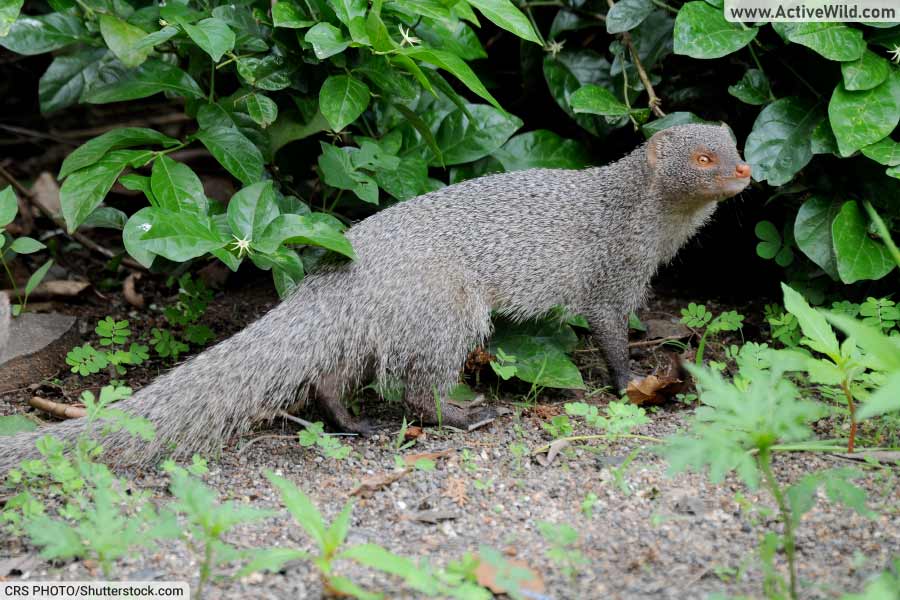
Ophiophagy is the eating of snakes. Animals that exhibit ophiophagy include mongooses (a family (Herpestidae) of weasel-like mammals found in the Old World that are resistant to snake venom), snake eagles (birds of prey belonging to the family Circaetinae), and the secretarybird (a long-legged bird of prey found in Africa).
Piscivore
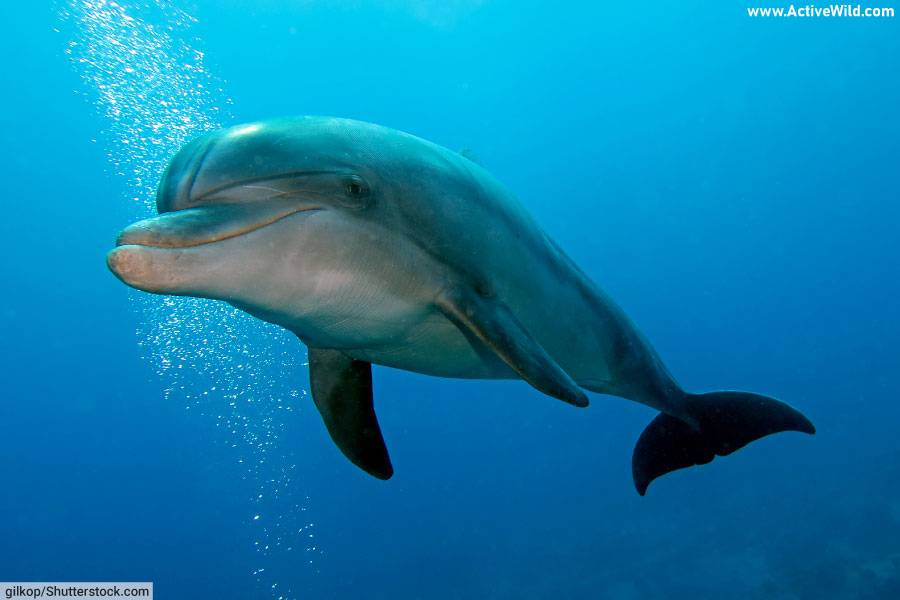
A piscivore is an animal that eats fish. Examples of piscivores include birds such as the osprey, Blakiston’s fish owl (the world’s largest owl), gannets and mergansers; and mammals such as the fishing cat, Eurasian otter, giant otter and bottlenose dolphin.
Spongivore
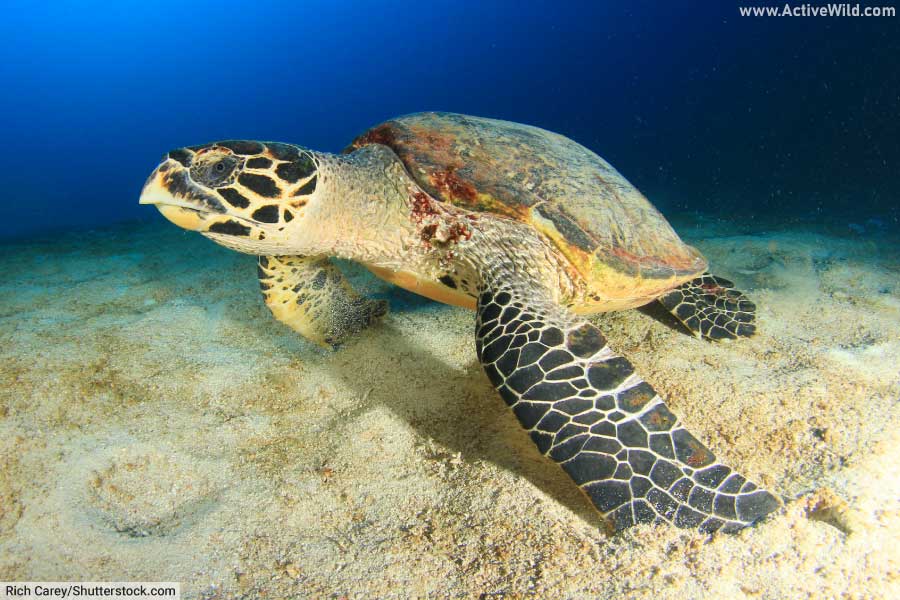
A spongivore is an animal that eats sponges. Examples of spongivores include the hawksbill sea turtle, and spongeflies which, in their larval form, eat sponges.
Vermivore
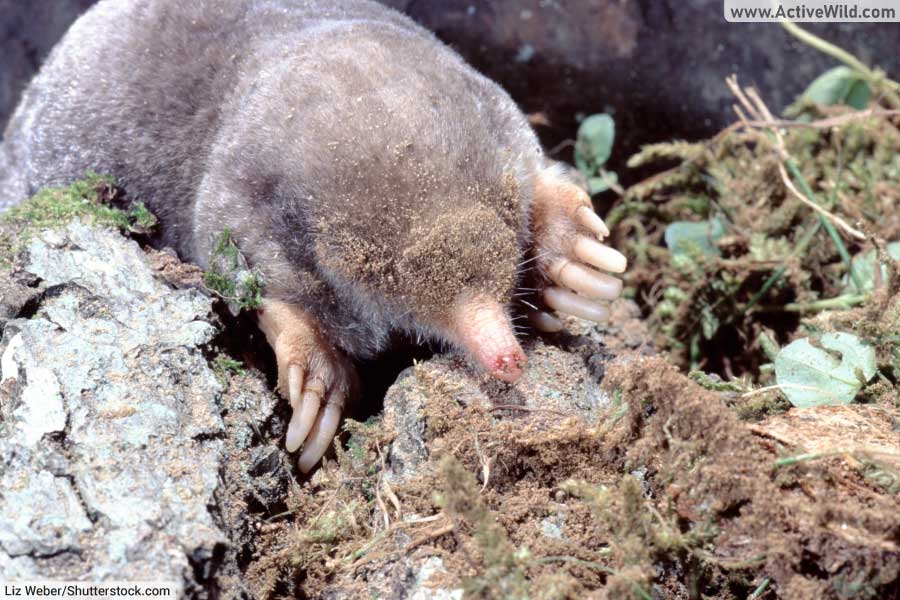
A vermivore is an animal that eats worms. Examples of vermivores include shrews (small, rodent-like animals), moles and long-beaked echidnas.
Specialist Herbivores
Exudativore
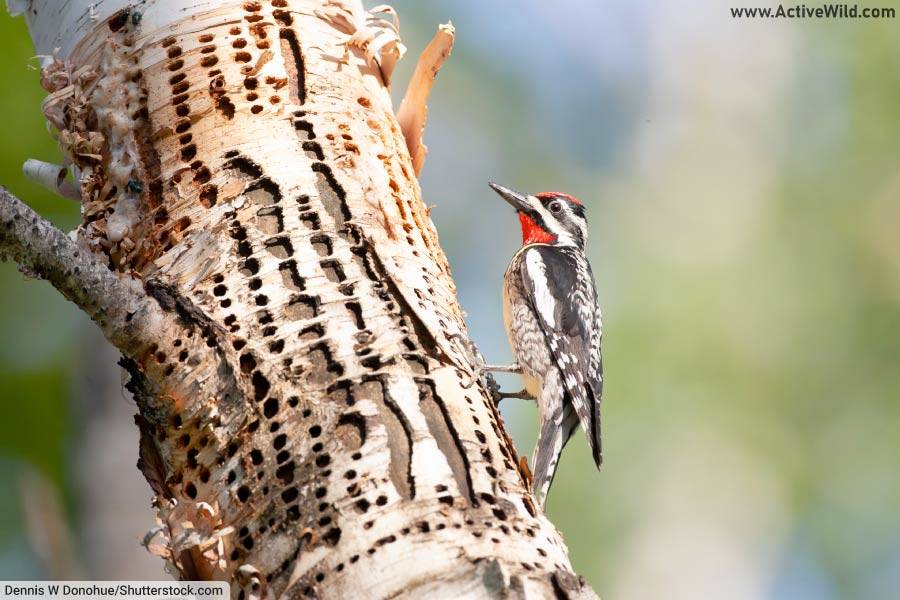
An exudativore is an animal that feeds on plant exudates (fluids emitted from plants), which include sap, gum, latex and resin. Examples of animals that are exudativores include sapsuckers (a group of North American woodpeckers), and aphids, a group of insects that includes insects known as greenflies and blackflies.
Folivore

A folivore is an animal that eats leaves. Examples of folivores include the hoatzin, a bird found in the rainforests of South America, and the koala, an Australian marsupial that feeds almost exclusively on eucalyptus leaves.
Frugivore
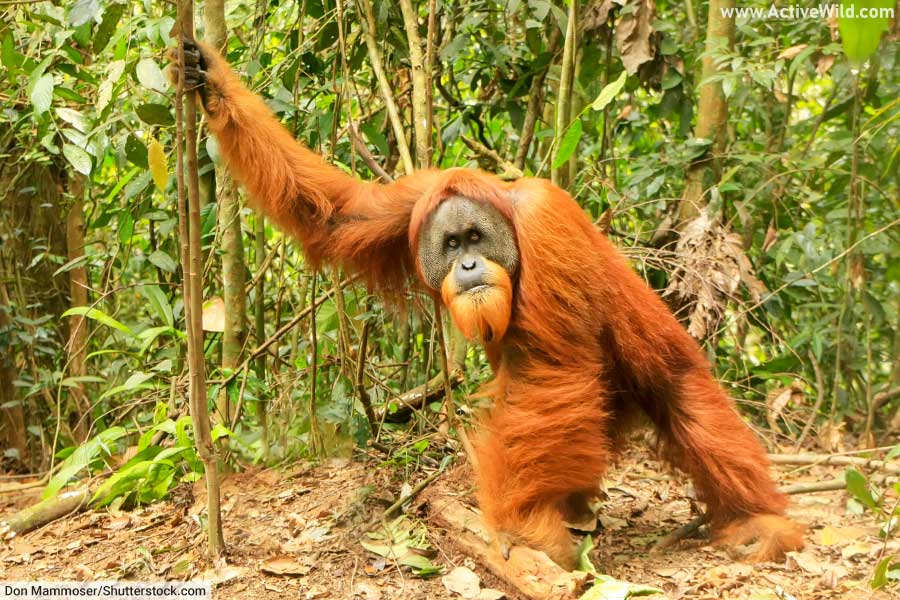
A frugivore is an animal that eats fruit. Examples of frugivores include orangutans, the coconut crab, toucans, hornbills, and megabats such as the Indian Flying fox.
Granivore
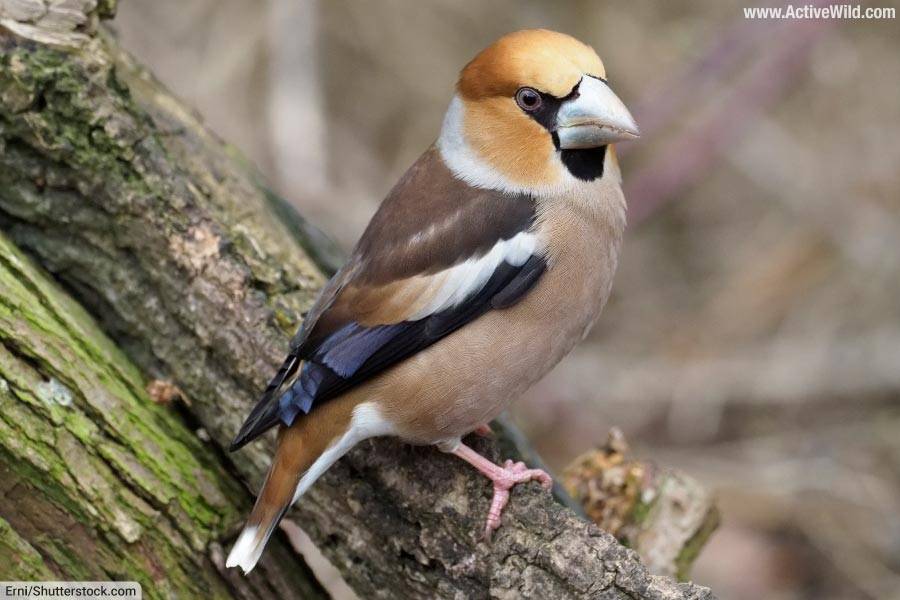
A granivore is an animal that feeds on seeds. Examples of granivores include finches (birds of family Fringillidae, which includes species such as the hawfinch and red crossbill), and the wood mouse, a small rodent found in Europe and North Africa.
Nectarivore
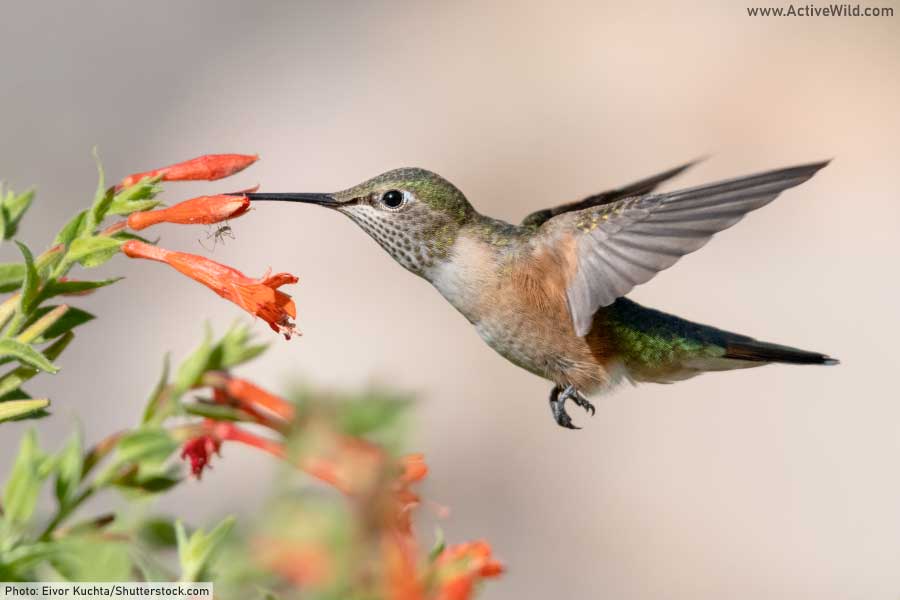
A nectarivore is an animal that feeds on nectar – a sweet fluid produced by flowers as an incentive for pollinators to visit. Examples of nectarivores include birds such as hummingbirds and sunbirds (both of which have long bills for gathering nectar); and bats such as the long-tongued nectar bat.
Xylophagy

A xylophage is an animal that feeds on wood. Examples of xylophagous animals include bark beetles; woodboring beetles such as the common furniture beetle and deathwatch beetle; drywood termites, and beavers.
Fungivore

A fungivore is an animal that feeds on fungi. Examples of fungivores include leafcutter ants, which grow fungi in their nests for food. Ambrosia beetles also create “fungus gardens” on which they feed.
Bacterivore
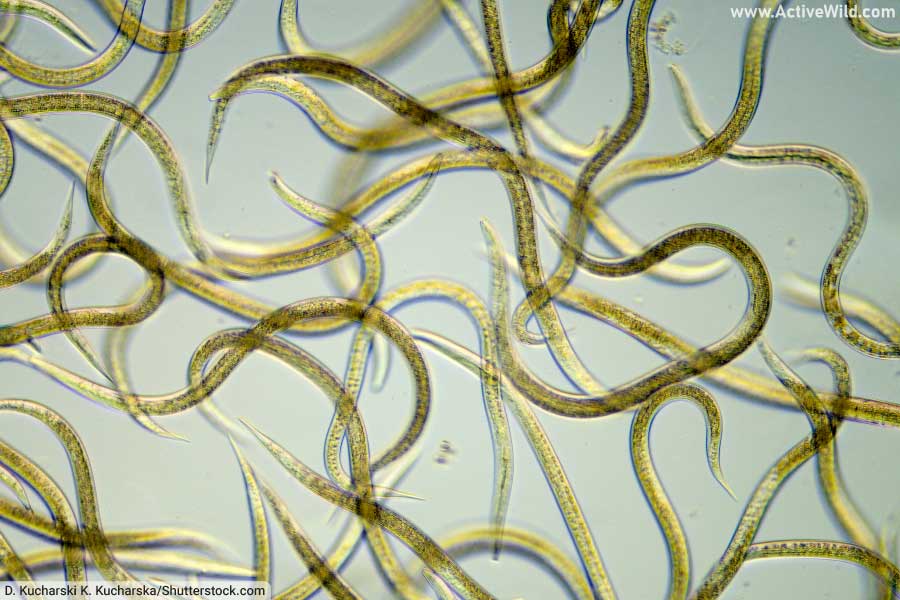
A bacterivore is an animal that feeds on bacteria. Examples of bacterivores include nematodes and unicellular amoebae.
Other Animal Diets
Detritivore
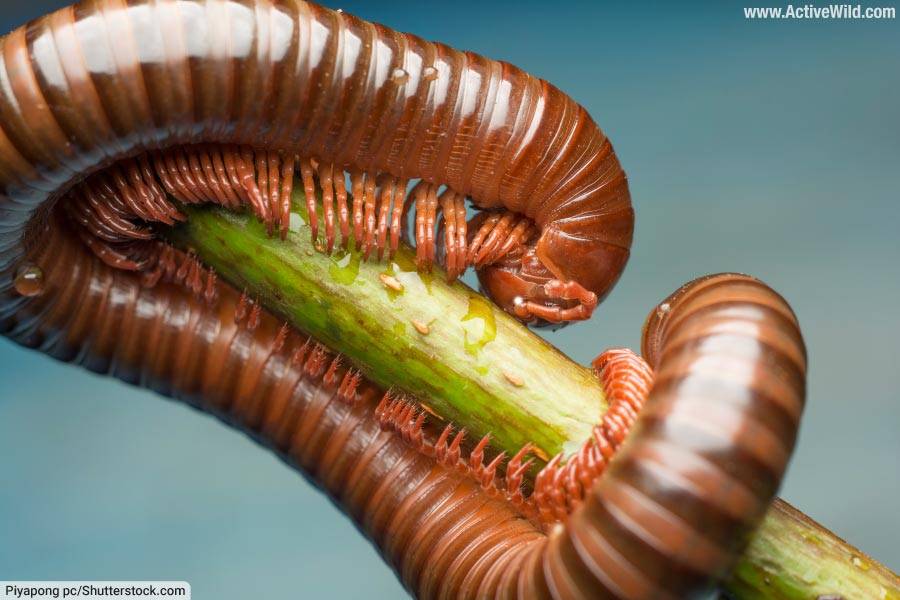
A detritivore is an animal that feeds on detritus (non-living organic matter). Examples of detritivores include earthworms and millipedes.
Coprophagy
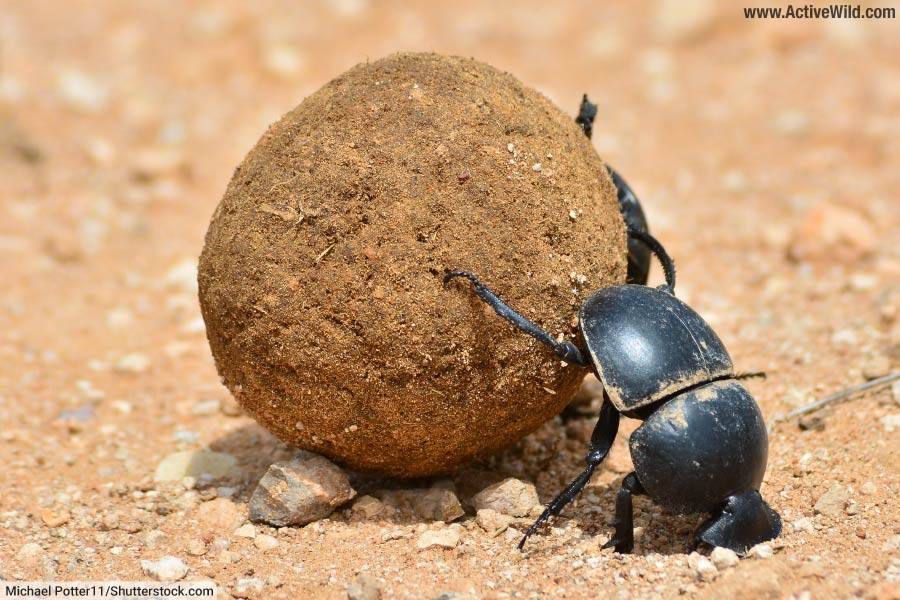
Coprophagy is the eating of feces. Coprophagous animals include insects such as the yellow dung fly and dung beetles; and hares, which consume their own droppings in order to obtain undigested nutrients.
Discover More With Active Wild
- You can find a complete guide to the animal kingdom on this page: Animals
- Find out more about animal habitats on this page: Animal Habitats
- Find out where animals on every continent: Animals Around The World
The post What Do Animals Eat? Carnivores Vs Omnivores Vs Herbivores & More appeared first on Active Wild.